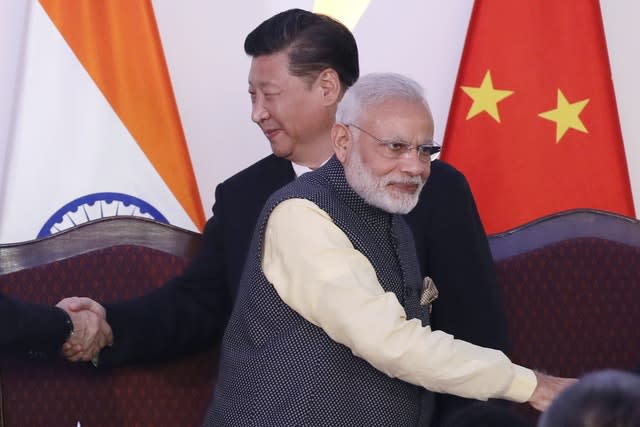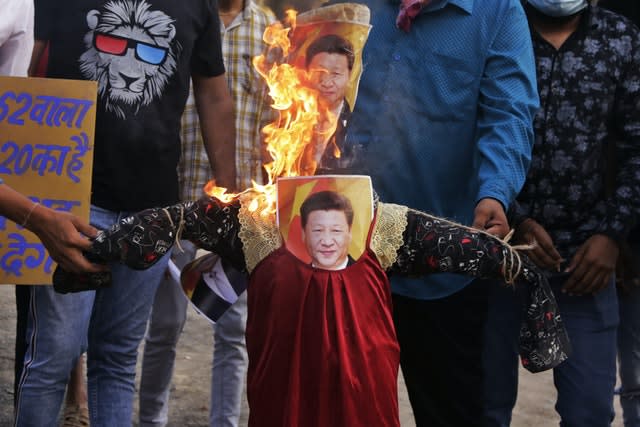India’s prime minister meets opposition leaders amid China border row
India’s prime minister has met senior opposition leaders who questioned whether intelligence failures allowed China to build up its forces in disputed Himalayan territory ahead of a clash that killed 20 Indian soldiers.
Sonia Gandhi, the main opposition Congress party chief, called for answers as well as tough government action in defending Indian territory.
“We are still in the dark about many crucial aspects of the crisis,” she said.
India and China accuse each other of instigating the fight in the Galwan Valley, part of the disputed Ladakh region along the Himalayan frontier.
China has not said whether it suffered any casualties in what was the deadliest conflict between the sides in 45 years.
Both countries said they were communicating through military and diplomatic channels and stressed the importance of their broader relationship. Experts say the two nations are unlikely to head to war, but easing tensions quickly will be difficult.

China on Friday maintained its position that India was to blame for the clash.
“The right and wrong is very clear and the responsibility lies entirely with the Indian side,” Foreign Ministry spokesman Zhao Lijian said.
Both sides have denied media reports that Indian soldiers were in Chinese custody.
During Monday’s clash soldiers brawled with clubs, rocks and fists at 14,000ft above sea level, but no shots were fired, Indian officials have said. The soldiers carry firearms but are not allowed to use them under a previous agreement in the border dispute.
Indian security officials have said the deaths were caused by severe injuries and exposure to subzero temperatures.
The clash escalated a standoff that began in early May, when Indian officials said Chinese soldiers crossed the border in three places, erecting tents and guard posts and ignoring warnings to leave.
That triggered shouting matches, stone-throwing and fistfights between the opposing sides, much of it replayed on TV news programmes and on social media.

The clash has taken place on a remote stretch of the 2,100-mile Line of Actual Control — the border established following a war between India and China in 1962 that resulted in an uneasy truce.
The rules of engagement along the Line of Actual Control — which prohibit using live ammunition but also ban physical contact between soldiers — will have to be renegotiated, defence analyst Rahul Bedi said.
“There is a lot of pressure on the Indian side, the emotions are high among the public,” he said.
“It remains to be seen whether India will sit down at the negotiating table with China and say it will like to change these agreements to make them a little more aggressive or offensive in nature.”
India’s defence minister Rajnath Singh spoke to heads of various political parties on Thursday to develop a consensus on the situation, and on Friday, prime minister Narendra Modi was meeting the leaders of more than a dozen opposition parties.
The main opposition Congress party said the country deserves to know the truth.
“It deserves a leadership that is willing to do anything before allowing its land to be taken,” it said in a statement.
The clash has fanned growing anti-Chinese sentiment in India, which was already high because of the coronavirus pandemic, which began in China late last year. India’s caseload has climbed to fourth-highest in the world.

